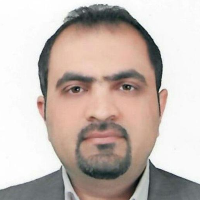Spatio-temporal Analysis of Land Surface Temperature Using a Genetic-Based Selection Procedure (Case Study: Tehran, Iran)
Due to the rising global temperature, especially in cities, which is often due to urban and population growth, followed by life, financial and environmental risks, identifying the factors affecting the Land Surface Temperature (LST) in urban areas is of great importance. Rising temperatures in urban areas have created a phenomenon called Urban Heat Islands (UHI), which is a very dangerous phenomenon for humans and the environment. Therefore, by identifying these factors, we can prevent this phenomenon as much as possible by using public education to the people, enacting effective management laws and policies, and more monitoring to deal with the stimuli of rising the LST. The main reason for the increase in LST in urban areas is due to urban growth in two-dimensional and three-dimensional direction, and this phenomenon is intensified by population growth and land use changes. Numerous other factors, such as the heating of buildings, air pollution, and the use of unsuitable materials such as asphalt, which absorbs sunlight, cause rising the LST in the streets and alleys. The purpose of this study is to identify the spatial factors affecting the LST in urban areas during a certain time and predict it based on the effective factors determined by the proposed algorithm. In this study, a selection method for identifying the effective factors in predicting Land Surface Temperature in urban areas through the combination of Genetic Algorithm and Geographically and Temporally Weighted Regression was presented. To evaluate the proposed method, nine factors including land use, distance to roads, population density, construction density, air pollution, aspect, slope, building height and elevation were used in this study as the spatiotemporal factors to predict Land Surface Temperature in a desired time in Tehran city, Iran.
In this study, an attempt was made to identify and investigate some factors affecting LST in urban areas. Attempts have also been made to consider both natural and human factors. These factors include elevation, aspect, slope, land use, distance to roads, population density, construction density, air pollution and building height. In order to find the most effective factors on LST, a combination of genetic selection method and Geographically and Temporally Weighted Regression (GTWR) was used in which LST is estimated through the spatial data during a certain time. . The optimal factors are selected to predict LST by combining the genetic algorithm with the GTWR function. By the development of the time dimension of the GWR model, the GTWR model was introduced, which includes bandwidth and the spatio-temporal kernel function. In Geographically and Temporally Weighted Regression, it is assumed that data have autocorrelation and temporal instability in addition to spatial autocorrelation and instability. That is, regression coefficients, in addition to changing from point to point, also vary for one point at various times.
In order to implement the proposed algorithm, 1500 points were randomly generated in the study area. All input data in ArcGIS software was converted to raster format so that the values of this data could be assigned to these random points. After preparing all data based on the generated points, these data were entered into the proposed algorithm and finally 5 factors out of the 9 factors were identified as effective factors. The value of R2 obtained by GTWR method with 5 identified effective factors was 0.9882 and using all available factors 0.9621 which shows the improvement of the results and high compatibility of this model with selected factors. Also, the RMSE value was 0.5097 and the normalized RMSE value was 0.1908, which indicates the high accuracy of this model.
Using the proposed algorithm, 5 factors including elevation, distance to roads, land use, construction density and air pollution were selected as effective factors for predicting LST. The results of this study indicate that the prediction results using the selected factors are more accurate than the same results using all factors. Accordingly, the experimental results of this study show the appropriate performance of the proposed method in predicting LST. Finally, due to data availability problem in this study, it is suggested to increase the number of factors in study area, especially human factors in future works. Traffic in cities, urban geometry, types of land uses are among the important human factors that can be effective in LST.
- حق عضویت دریافتی صرف حمایت از نشریات عضو و نگهداری، تکمیل و توسعه مگیران میشود.
- پرداخت حق اشتراک و دانلود مقالات اجازه بازنشر آن در سایر رسانههای چاپی و دیجیتال را به کاربر نمیدهد.



